This article originally appeared on VICE UK.
Even if you don't know the term, you'll know the scumbro. It's a fashion trend—one that's more Hypebeast than it is GQ—involving vaguely attractive men who look like they’ve had a collision with an easter egg basket. Think mismatched clothing, high-end brands, and a nod to the streetwear realm. It is Diplo looking like the dude who sells you bad weed on the Venice boardwalk, evangelical Justin Bieber with a side order of Tommy Jeans, slim Jonah Hill puffing on a vape.
More crucially, it's moneyed. The name came about thanks to Vanity Fair, which published an editorial called "Pete Davidson and the Rise of the Scumbro," naming the Saturday Night Live star as lord of the scums. Due, in part, to the recent uptick in luxury streetwear brands such as Palace and Supreme; the collapse of the catwalk into Instagram drops and Balenciaga Triple S sneakers; and men realizing they don't have to dress in the same three T-shirts (white, blue, white with blue stripes), it's a relatively new trend—scumbros only started appearing, slightly dazed and stepping out of an Uber, around this time last year.
Unlike these pioneering name-brand scumbros—who dress in primary-coloured sweatpants and look uncomfortable beneath facial hair, as if they're at the logical conclusion of a witness protection program, forced into fashion to escape their own face—I've been interested in clothes from a young age. It was probably around 12 when I learned that pants were important. I got a paper route and realized I didn't have to dress in the stuff my mom bought for me. I guess I loved the freedom the clothes offered; I loved how the right combination of garments could be used to tell stories about myself, or who I wanted to be that morning.
This is the essence of fashion: There are entire businesses built on these narratives, of how the right shirt will make you feel like a thousand bucks. It's why we dress up when we’re going out, dress down when we’re inside, aesthetically code-switching through the world's offices, restaurants, and house parties. But what story is the scumbro telling? I would have to become one to find out, and seeing as they look like gentrified trash, the first step was to wake up on my friend's couch in gentrified east London.

Though the scumbro is generally rich (minimum wage just isn't gonna cut it when it comes to £615 [$895] Triple S sneakers), they also cultivate an air of crustiness. Specific items, such as those sneakers, are coupled with a scummy white boy aesthetic that seems to scream "showering is optional." Picture your typical ketamine-addled college graduate—the kind of kid who chews tobacco and slides into DMs with all the grace of a drunk goose—and you'll be close to honing in on their style inspiration.
Part and parcel of the scumbro messiness is bad facial hair. Everyone knows the most disgraceful members of society let their beards grow past their sell-by date, hiding all of their impurities behind a gross follicle shield. But that's also so Tinder, 2015, and the scumbro has evolved with several varieties of beard. There's Jonah Hill's all-over-do, which I’m pretty sure would have a Reddit account if it could detach from his face, sentiently tweeting about Cambridge Analytica. Shia Labeouf's is somewhere between cowboy and hot garbage man. Then there's Justin Bieber, with his teeny-weeny, incy-wincy, baby-booby, oopsy-poopsy little mustache.
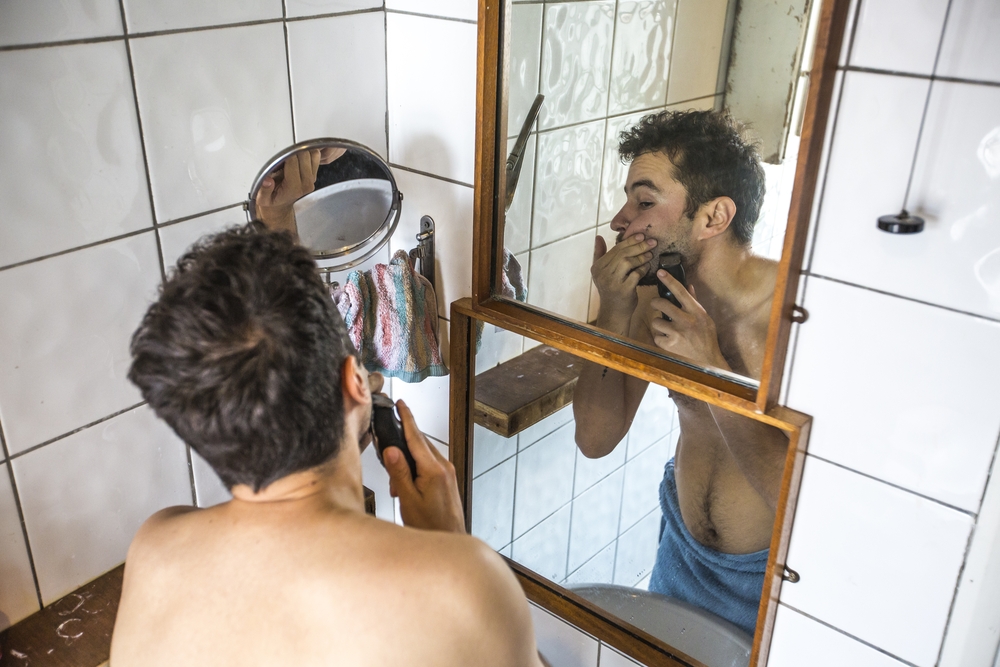
Of course I went for that one.
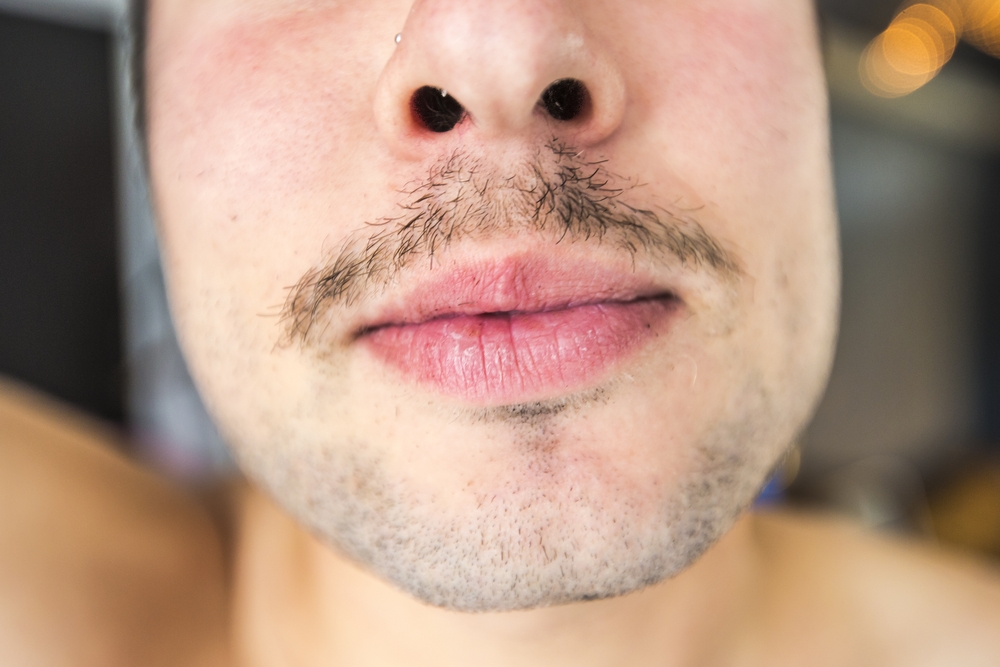
I immediately felt more scumbro-y. It felt sinister, and bad, as if a screenshot of my Tinder bio was being circulated through a thousand WhatsApp groups all at once.
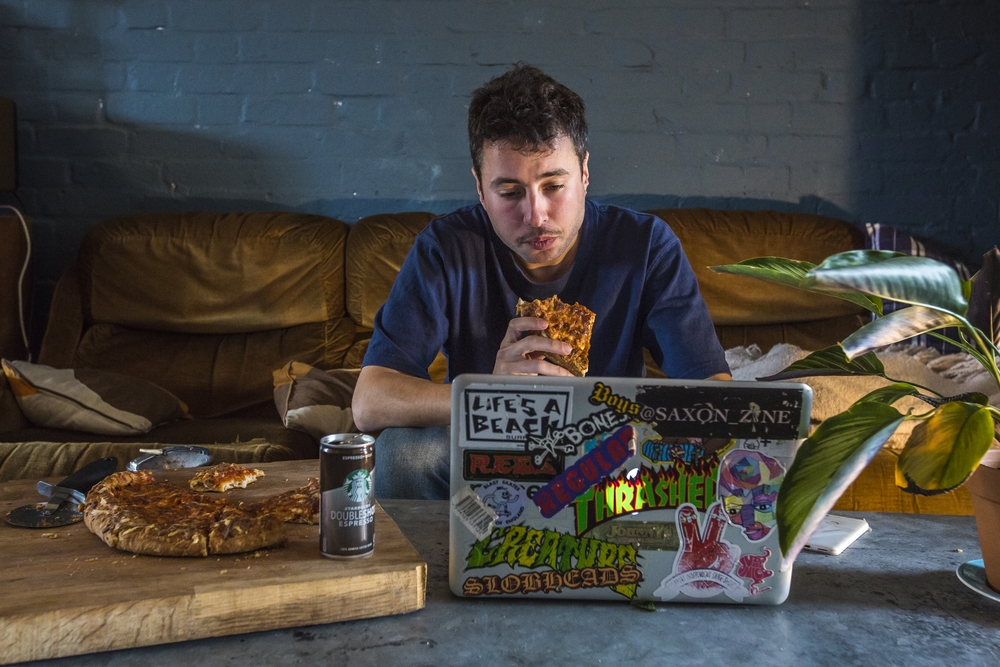
It was time to start building an outfit, but I still felt too… me. I felt light, and well-rested, and pure. So I consumed a whole oven pizza and a coffee-in-a-can of double espresso for breakfast because it was important to feel full and gross and uncomfortably on edge if I was going to do this properly.

Thing is: dressing like a scumbro is wildly expensive. In the Vanity Fair piece from this summer, Lawrence "Four Pins" Schlossman said: "What’s awesome about brands like Supreme and Palace—and this is one of the biggest factors of their popularity—is that initial retail price point is super palatable," which is a sentence that breathes money and boujee loft apartment-elitism and being all about menswear.
I don't know what your definition of "palatable" is, but I browsed through the entire Palace website and couldn't find anything less than this turquoise T-shirt for £58 [$75].
This wouldn't do. I got a mustache for free, that one's on nature. But would it be possible to become a scrumbro on a budget? I set myself a limit of £60 [$80], the same price as the T-shirt, and headed out into the world.
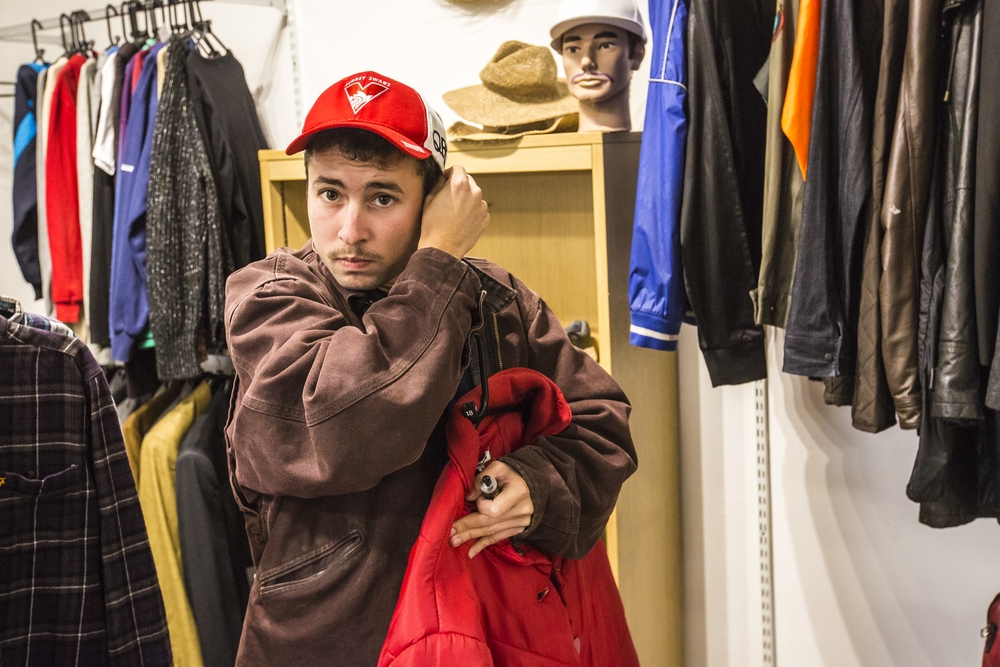
In many ways, early-90s Brad Pitt is the original scumbro. Walking around with his stoner eyes and his long hair and his man bag, he is the prime aesthetic exemplification of simultaneously giving and not giving a fuck—dressing in such a way that, were you to bring him home to meet the parents, it might unconsciously be due to some deep-seated issues that you really should have sorted out by now.
However, today's scumbros—the Biebers and the Labeoufs—took what Brad perfected and turned it 35 degrees to the left, moving the look from "charming and relatively harmless fuck-up" to "Florida Man Seen Riding Jet Ski Down State Highway." To achieve this feat, to look like I might appear on an ABC news segment, I was going to need a hat—in this case, a really dumb red hat. All the fucking weirdos out there wear these hats! They're the weirdo hats!
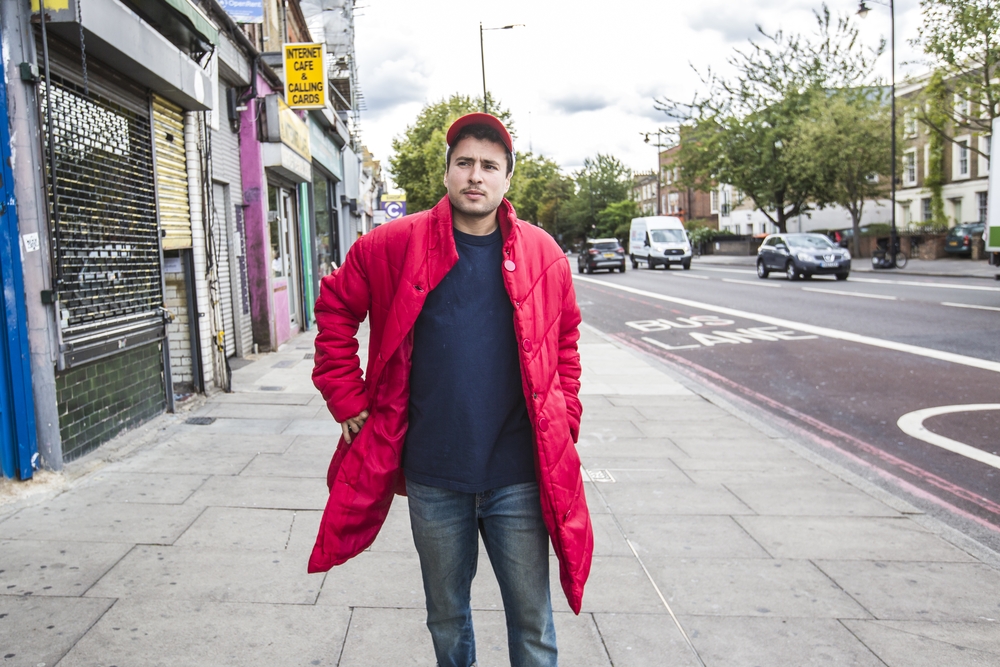
I also picked up a red coat because in the scumbro world, it's important to wear ostentatious items that don't really go together (i.e: baseball cap, for sports; luxury-look jacket that is several sizes too big, for fashion). Total cost: £7 [$9]. But the transformation wasn't complete: I needed to add some more color, to really make everything clash.
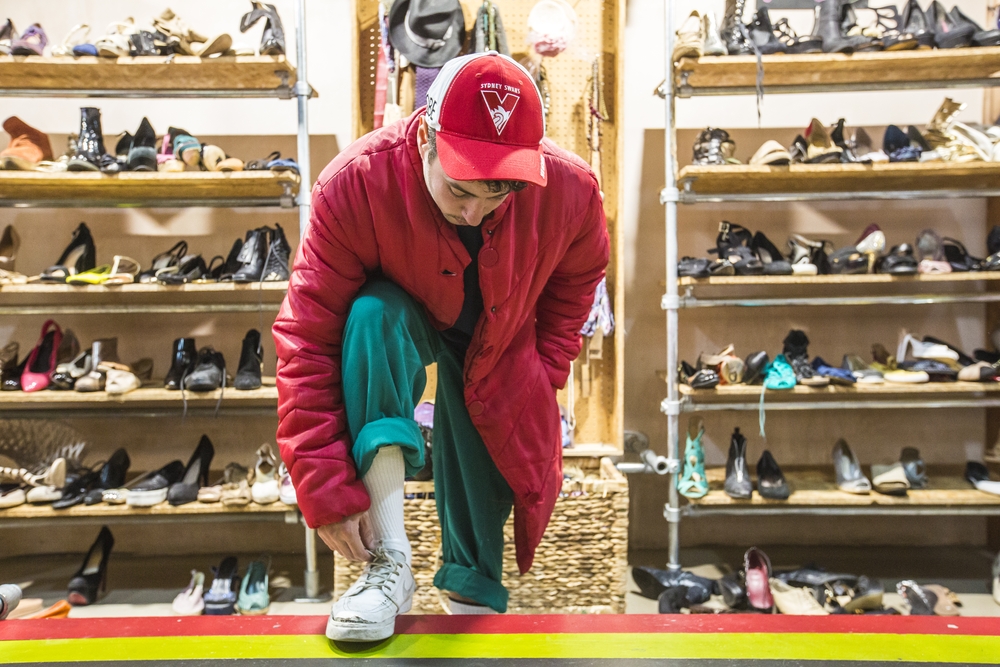
So, to top things off, I bought some green pants. In hindsight, these made me look like a cosplaying cross-breed between Mario and Luigi, but whatever: I've learned from it. I've moved on. Womp womp womp.

Oh, I also got some glasses, and to completely finish the look a very cheap white T-shirt, which I was almost sure to spill a can of Monster Energy drink on later.

There we go. Finally, I had arrived! I felt like I'd stepped off the long haul flight on half a xanny. Like I might sell you cocaine from my yacht. I will probably sleep with your Christian daughter when God isn't watching. I had become scumbro, destroyer of worlds.
Total cost? £32 [$41].
Next step: living the scumbro lifestyle.

Seeing as it's pretty much only celebrities who are financially able to live out this trend in its purest form when it came to being spiritually baked into becoming a scumbro, my options were limited. I didn't have a private jet to waltz toward, no hotel lobby to be papped in. I looked wistfully at the jewelry in the window of a local store, studying the gold, then thought about what I could do with my time. I was probably going to need some friends.
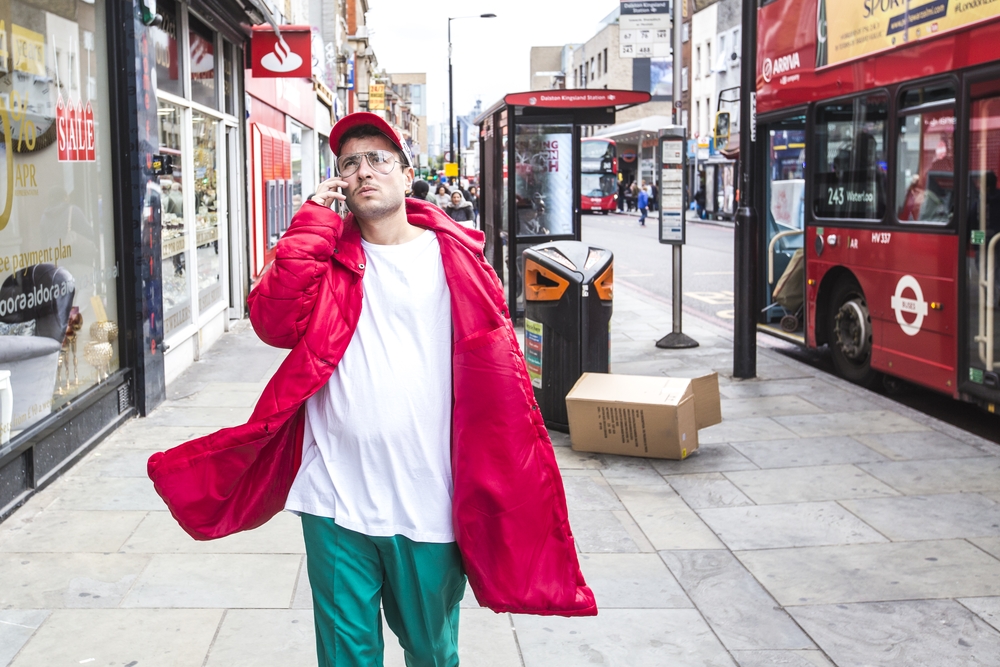
To get the ball rolling, I called some pals. No one answered. I guess they were all working hard at their jobs. I didn't have my own DiCaprio, or FKA twigs. I couldn't even reach a Mintz-Plasse. Instead, I hung out with this dog:

Thing is, he wasn't actually mine. He was just a prop pooch. I was going to have to do it alone. But what exactly do scumbros do when they're by themselves? Sure, they loiter and vape and whatnot. But do they, like, do stuff? I guess they go to places where you spend money, like gambling in Vegas. Sadly, the closest I could get to that was a gambling machine in a dilapidated pub.
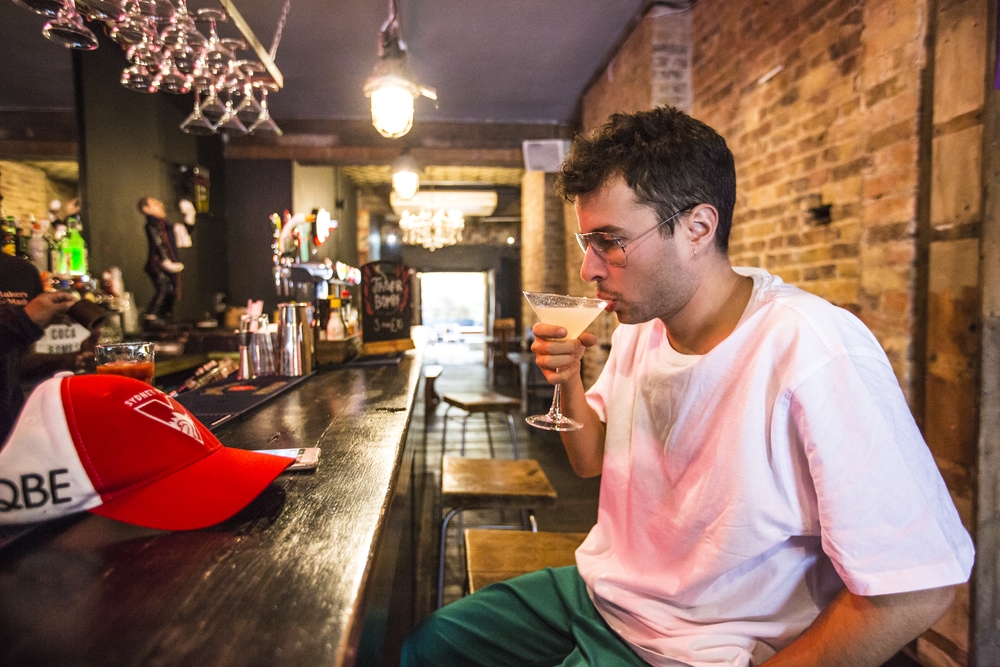
I had a cocktail in a bar, too.
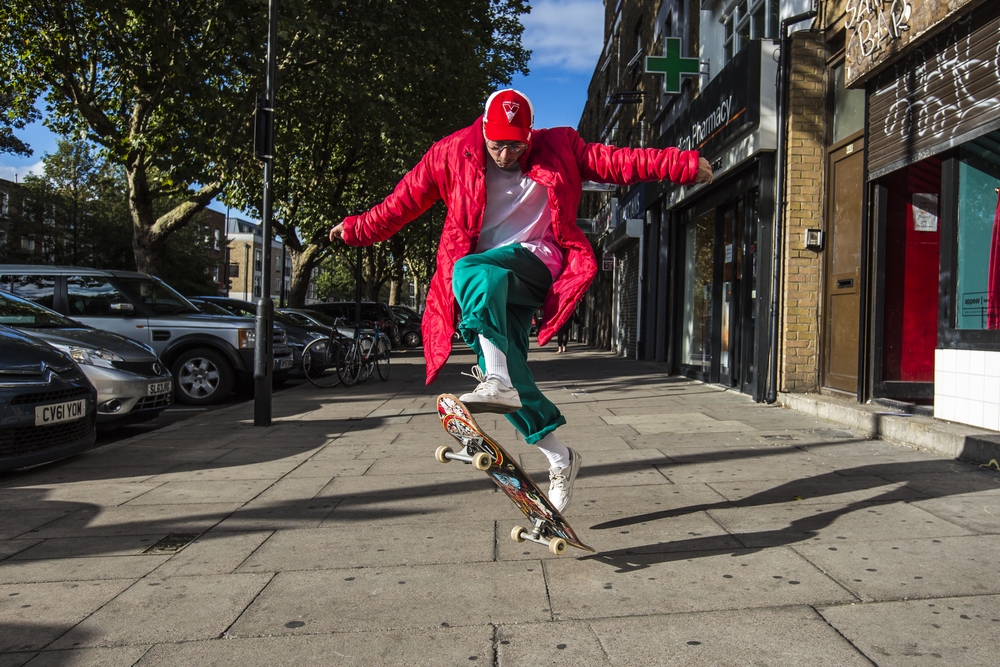
I even went skateboarding, a top-tier aspirational alone time activity for anyone looking to segue away from superstardom.
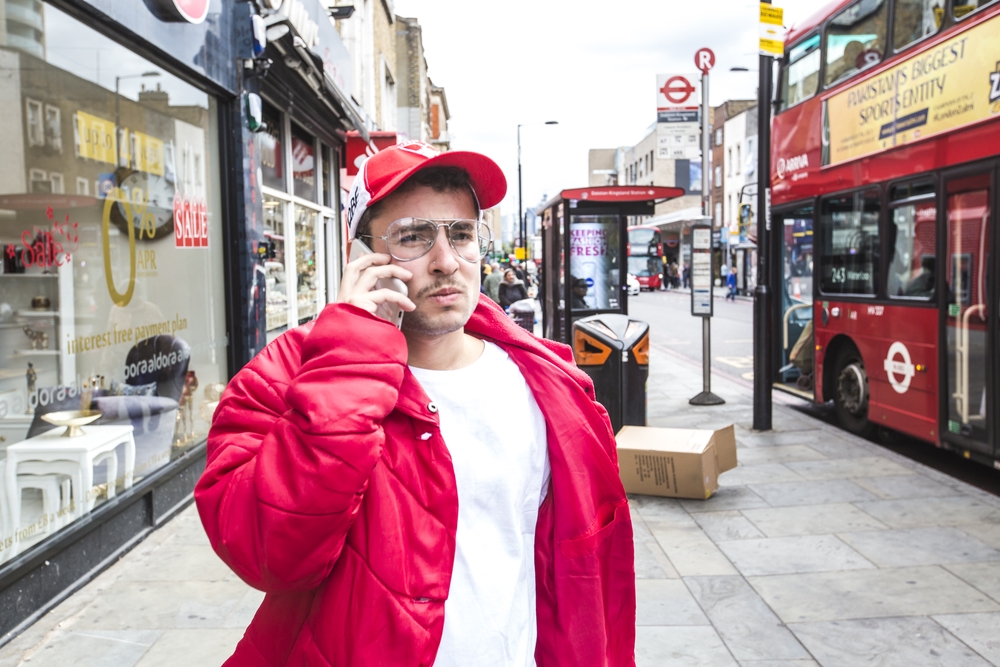
But the more time I spent in these clothes, the more I started to feel like an actual creep. It was probably the glasses, their 1980s porn director frames speaking volumes about my assumed cocaine habit. With each second spent trying to become a scumbro, my general sense of well-being fell. Living the scumbro life without having any real money was kind of impossible. I wanted to be the big daddy, the hot shot, but I was just a stupid person in some dumb clothes, vaping for a photographer.

And herein lays the narrative of the scumbro trend. These men have already entered a faustian trade-off by being so rich and famous that, in trying to dress normal, they almost have to do it in a moneyed way. They can't piece together a pedestrian look because they’re so famous that, when they try to buy normal-looking clothes in the expensive shops they're used to, they inevitably end up looking more like the left-field inserts in the Palace A/W 2018 lookbook .
The story the scumbro wants to tell is that they’re just like you. But it's patently clear that by starring in films and making tunes and dressing in outfits that can't properly be recreated in charity shops, like I’ve tried to do, they’re not. It's telling, in fact, that there’s a difference between the average streetwear head and the generic scumbro.
Still, I guess dressing like a scumbro is a form of celebrity freedom: It's a way to go beyond oneself. I'm not saying Bieber wakes up feeling like you and I—worrying about bills and scabs and if he’s remembered to defrost tonight’s chicken. The key is that it looks like he just might be thinking those things, even if he isn’t.
And that’s the true magic of clothes: they’re fake, they’re real, they’re everything you want them to be. They’re Justin Bieber in a shitty trailer hat trying and failing to look normal; and they’re me, in a shitty red coat, trying and failing to look rich. It’s the scumbro dichotomy: You have to look like the thing you aren’t to be the thing you are. I kept the hat, the coat will get a walk out, it took me three days to feel normal again after eating pizza through a mustache. How anyone can live like this is beyond me.
Sign up for our newsletter to get the best of VICE delivered to your inbox daily.
Follow Ryan Bassil and Jake Lewis on Twitter.
This article originally appeared on VICE UK.


















